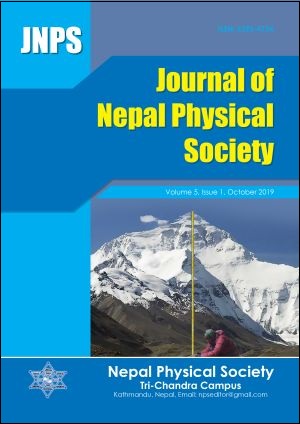An Infrared Survey of Isolated Nebular Structures at Galactic Latitudes 16.98° & 1.98° in ARAS map
DOI:
https://doi.org/10.3126/jnphyssoc.v5i1.26934Keywords:
Infrared astronomy, IRAS, dust mass, temperature, dust geometry, star-formation, Inclination angle, NebulaeAbstract
Two isolated far infrared dust structures (∼2.61pc × 1.57pc and ∼82.99pc × 39.99pc) at galactic coordinates: (353.01°, 16.98°) and (18.42°, 1.98°), were selected. We adopted the distance of the first structure to be about 139 pc and that of the second structure to be 2.6 kpc. In this present work we have studied the flux density variation and calculated dust color temperature and mass profile of the dust and Jeans mass of the structures using the data reduction software ALADIN v9. Our aim was to test whether this region is star forming or not. We also calculated the size and inclination angle of our structures. The dust color temperature is found to lie in the range 20.75 K to 35.90 K for the first region and 22.52 K to 45.63 K for the second region. The total mass of gas for the first structure is found to be about 20.99 M☉ and Jeans mass is found to be 180.9 M☉, which is significantly greater than the total mass of the structure, suggesting no possibility of star formation activity for the first region. For the second region, the total mass of gas and the Jeans mass are found to be 5621.61 M☉ and 6005.04 M☉ respectively. The mass of the region is still significantly lesser than the Jeans mass. Thus, we conclude that this region is also probably not a star forming region. Also the study of inclination angle suggests that the three-dimensional shape of structures is non uniform and regularly shaped.
Downloads
Downloads
Published
How to Cite
Issue
Section
License
All right reserved. No part of this Journal may be reproduced in any form or by any electronic or mechanical means, including information storage and retrieval system, without permission in writing from the publisher, except by a reviewer who may quote brief passage in a review. The views and interpretation in this journal are those of author(s) and they are not attributable to the NPS.




